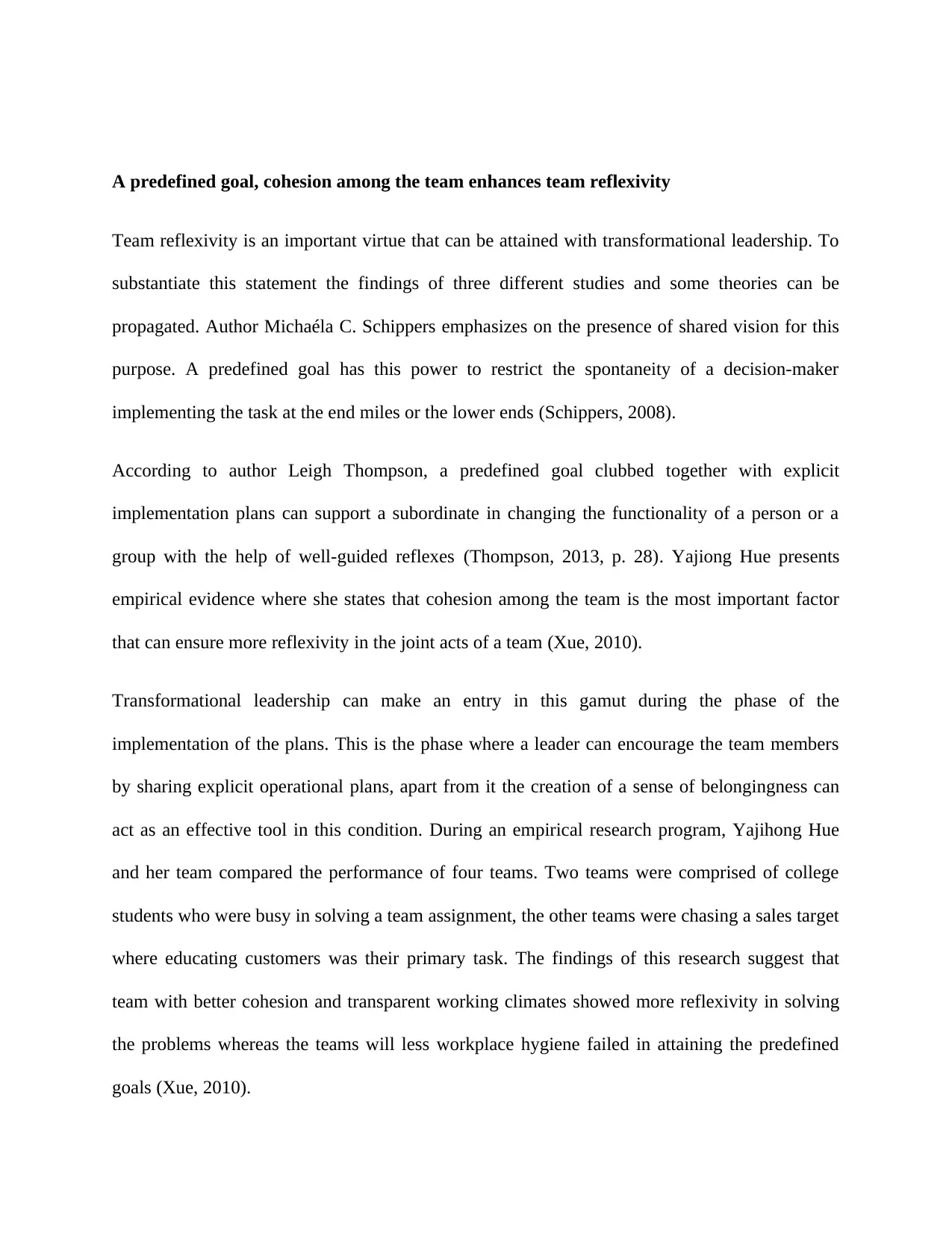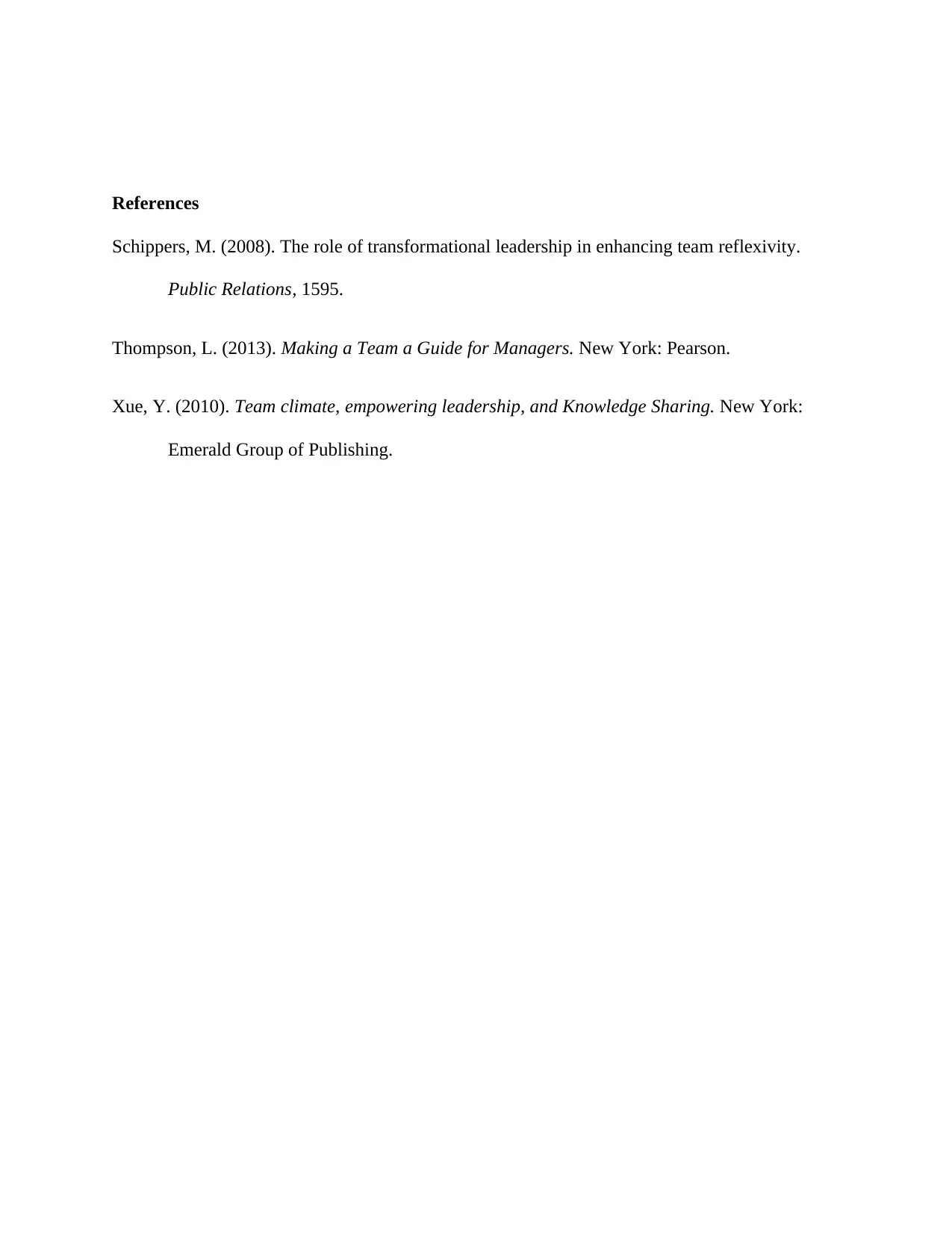How Transformational Leadership Enhances Team Reflexivity
VerifiedAdded on 2022/09/14
|3
|384
|20
Essay
AI Summary
This essay discusses how transformational leadership enhances team reflexivity by fostering cohesion and a shared vision. It references studies by Micha�la C. Schippers, Leigh Thompson, and Yajiong Xue to support the claim that predefined goals and explicit implementation plans, combined with a sense of belongingness, improve team performance and problem-solving abilities. The essay highlights the importance of transparent working climates and effective communication in achieving predefined goals, citing empirical evidence that demonstrates how teams with better cohesion exhibit greater reflexivity in their joint actions.
1 out of 3




![[object Object]](/_next/static/media/star-bottom.7253800d.svg)